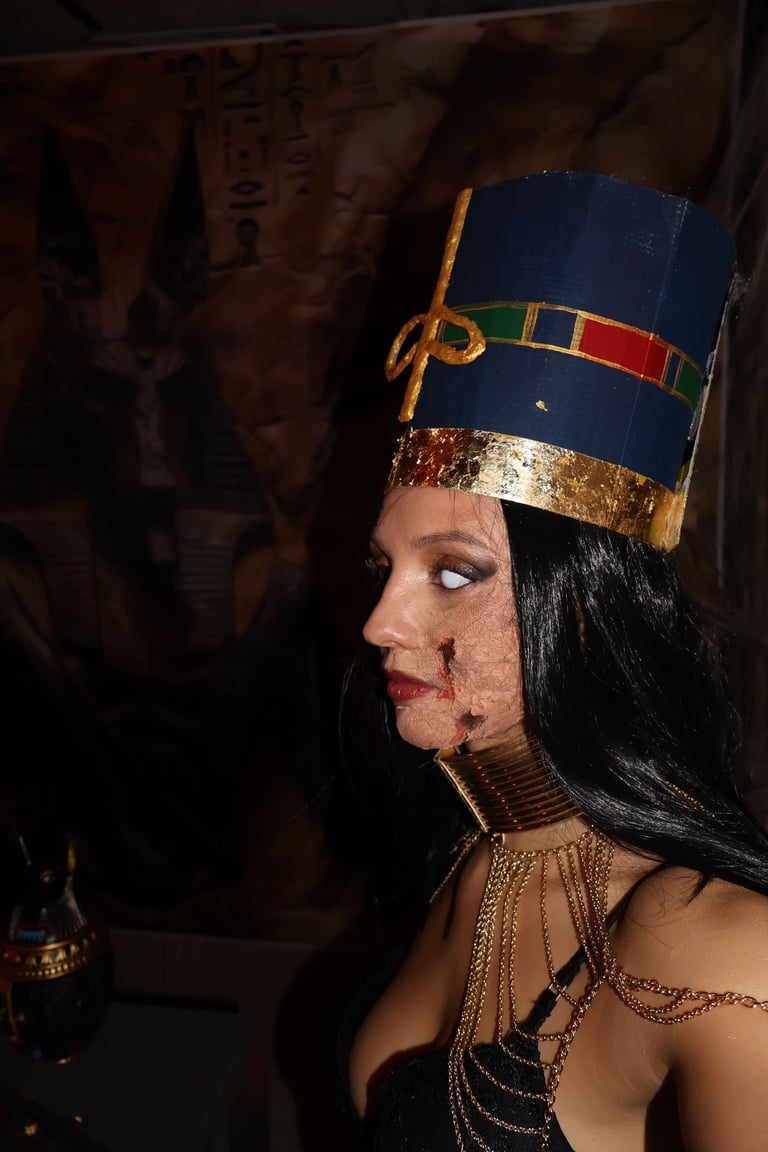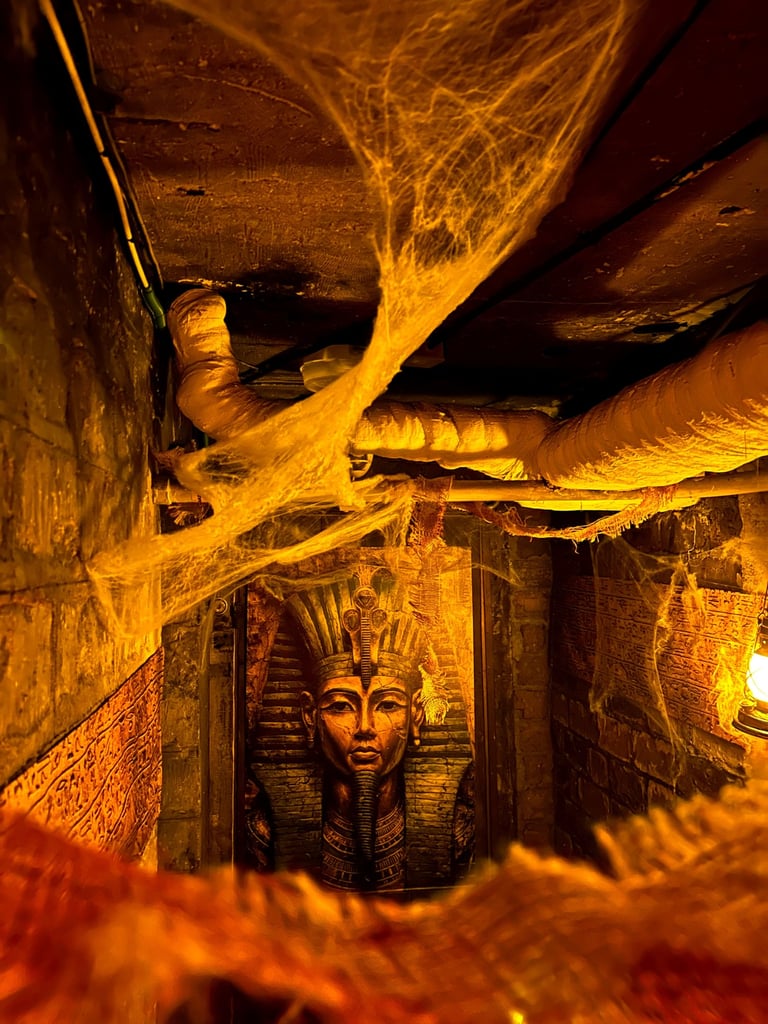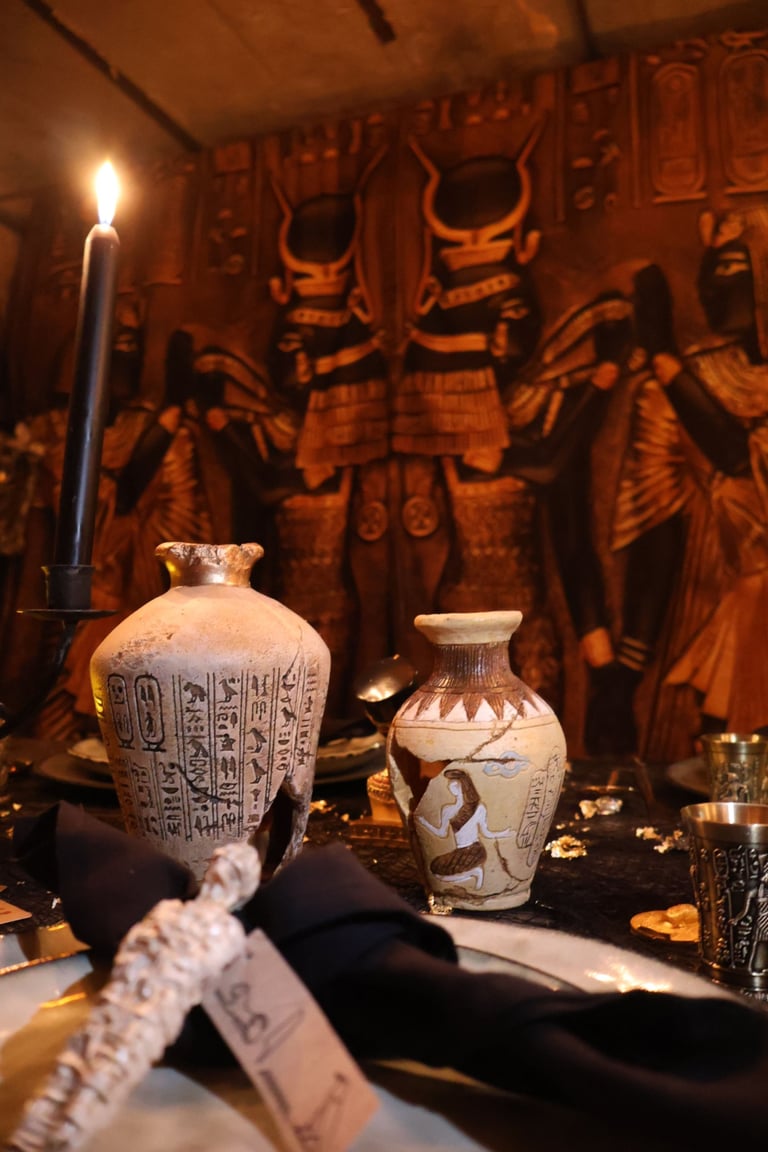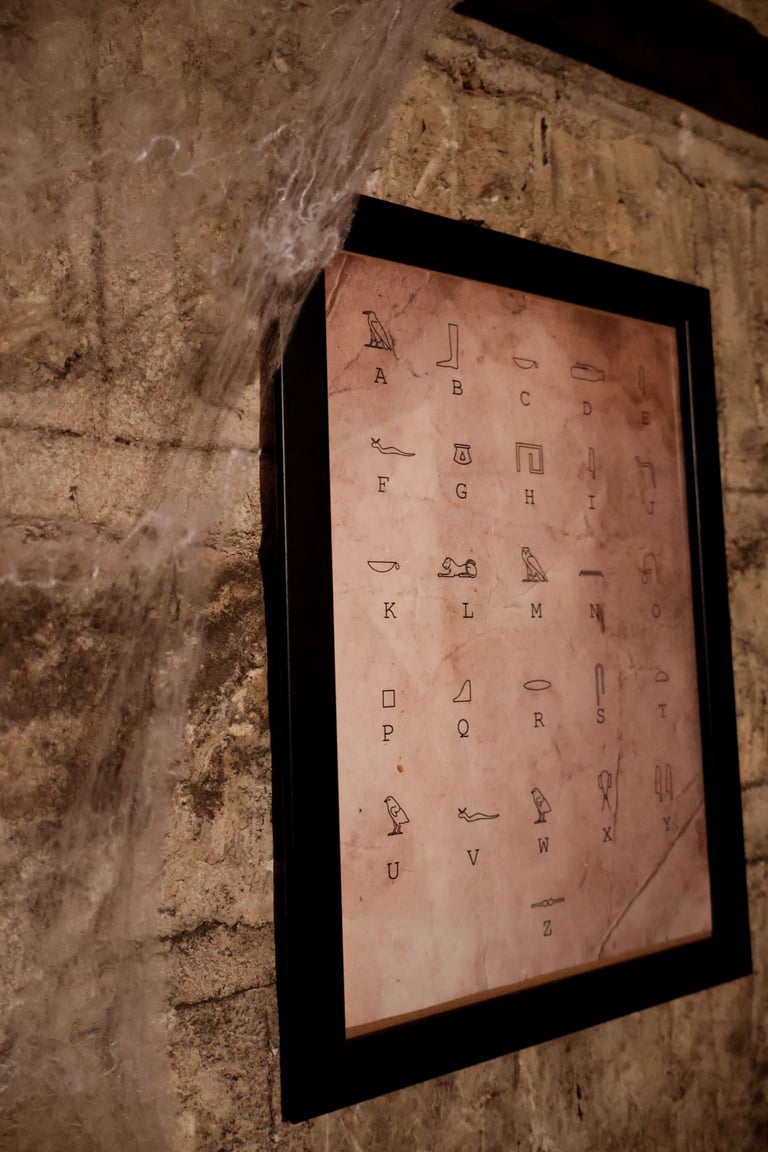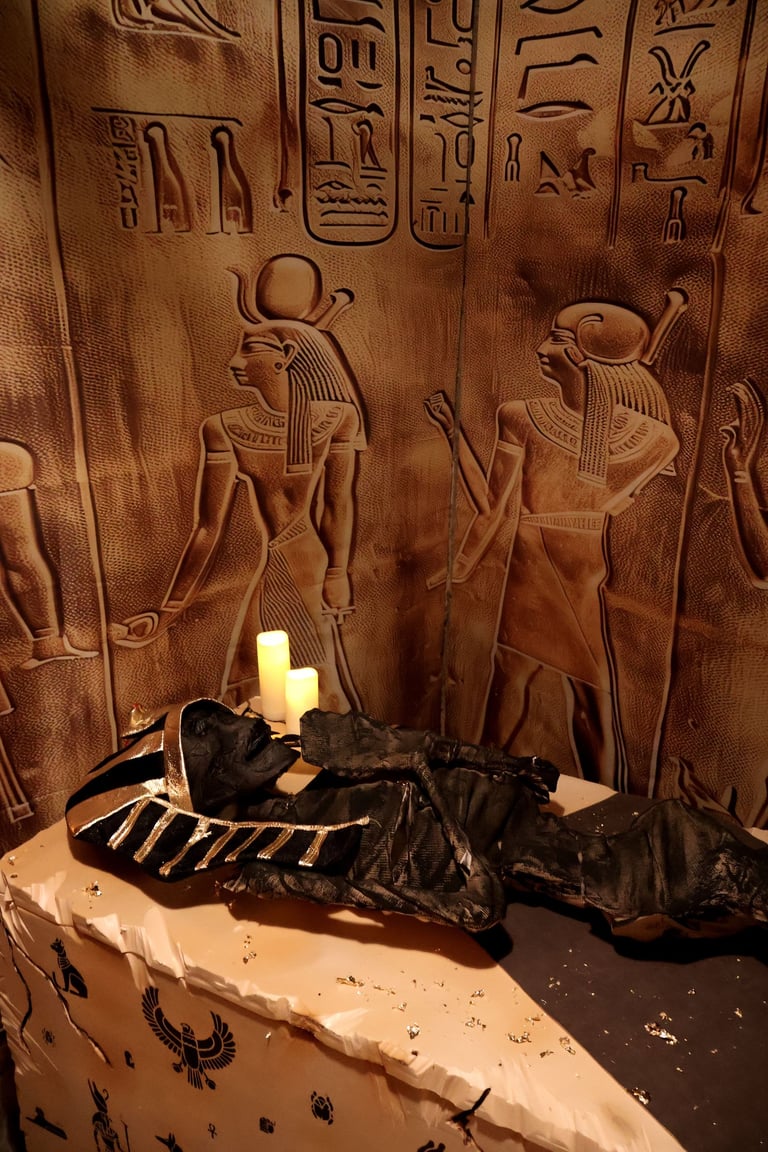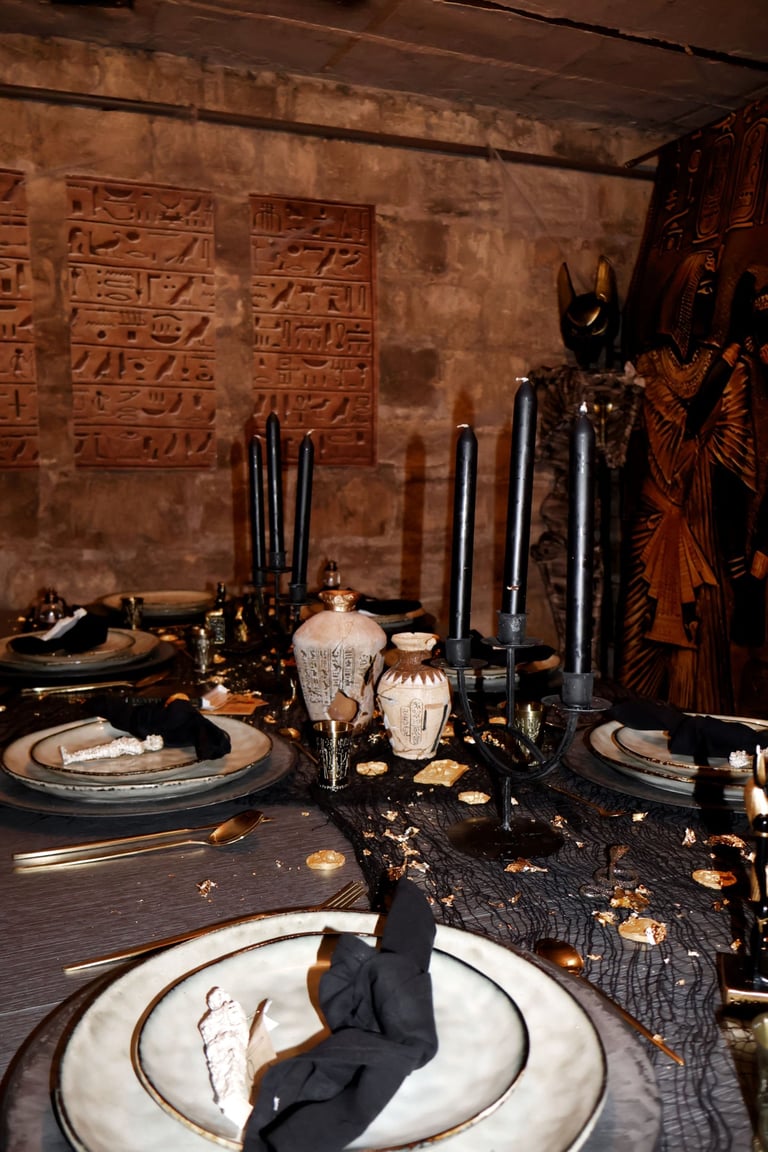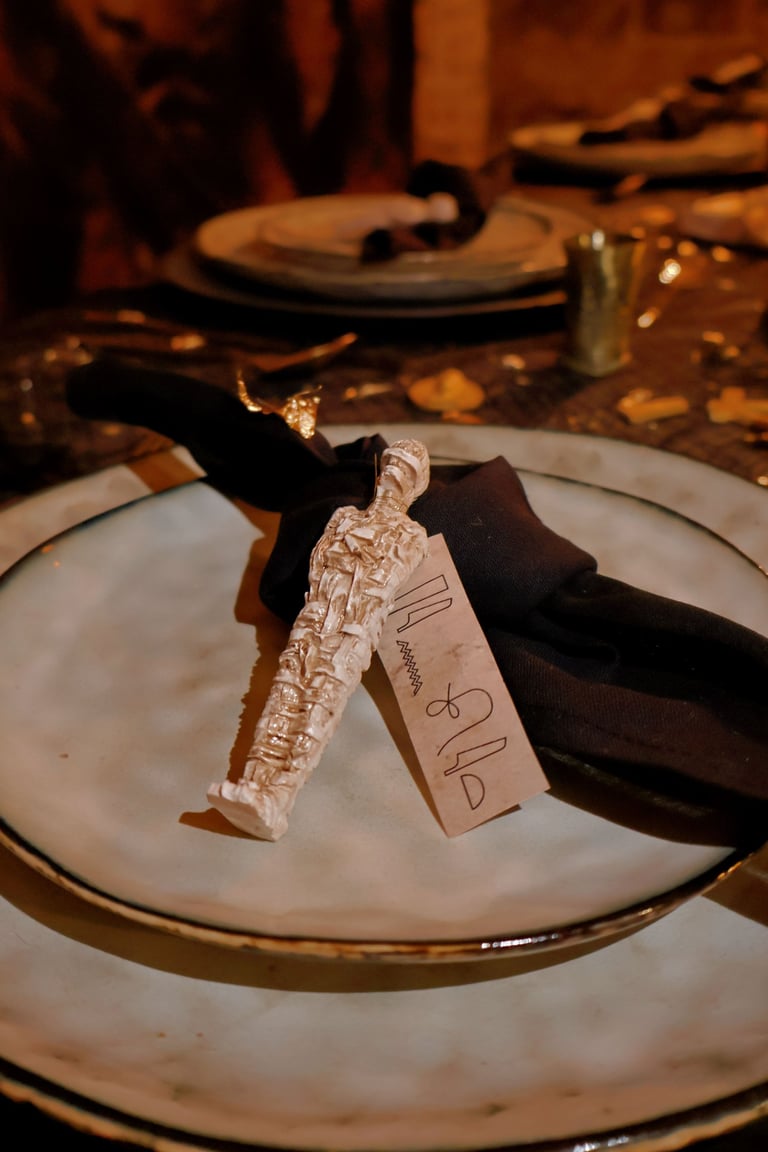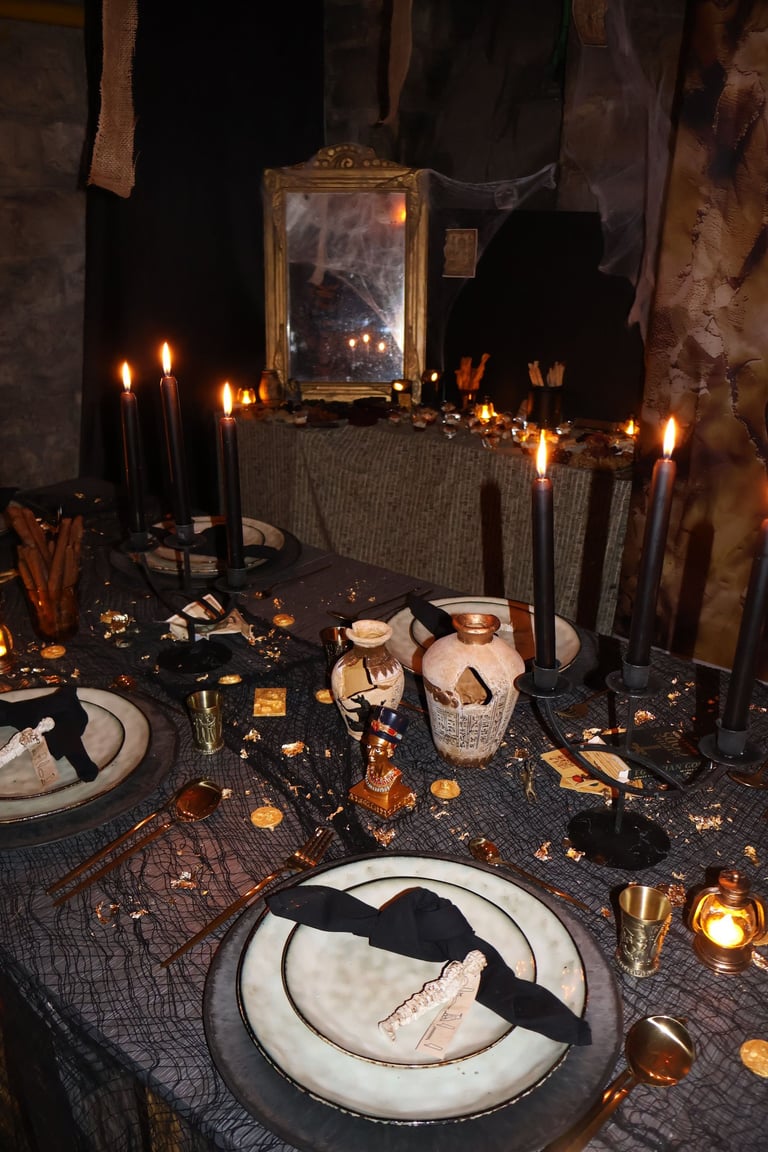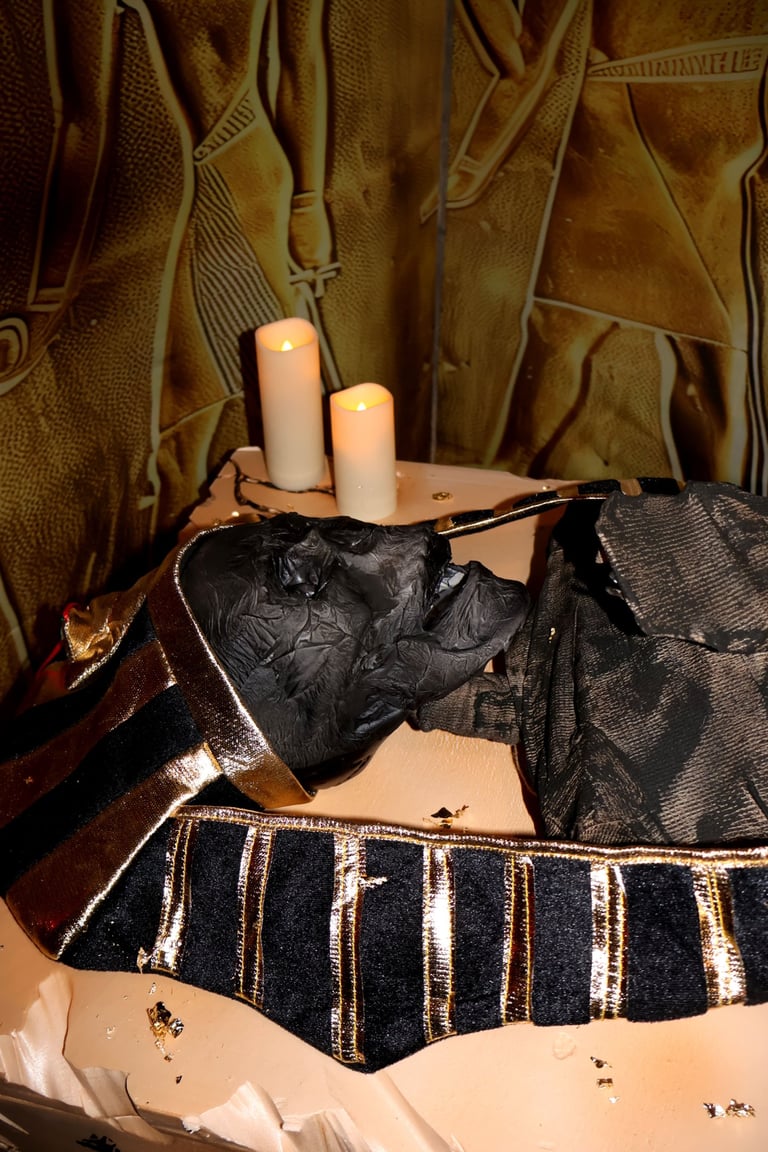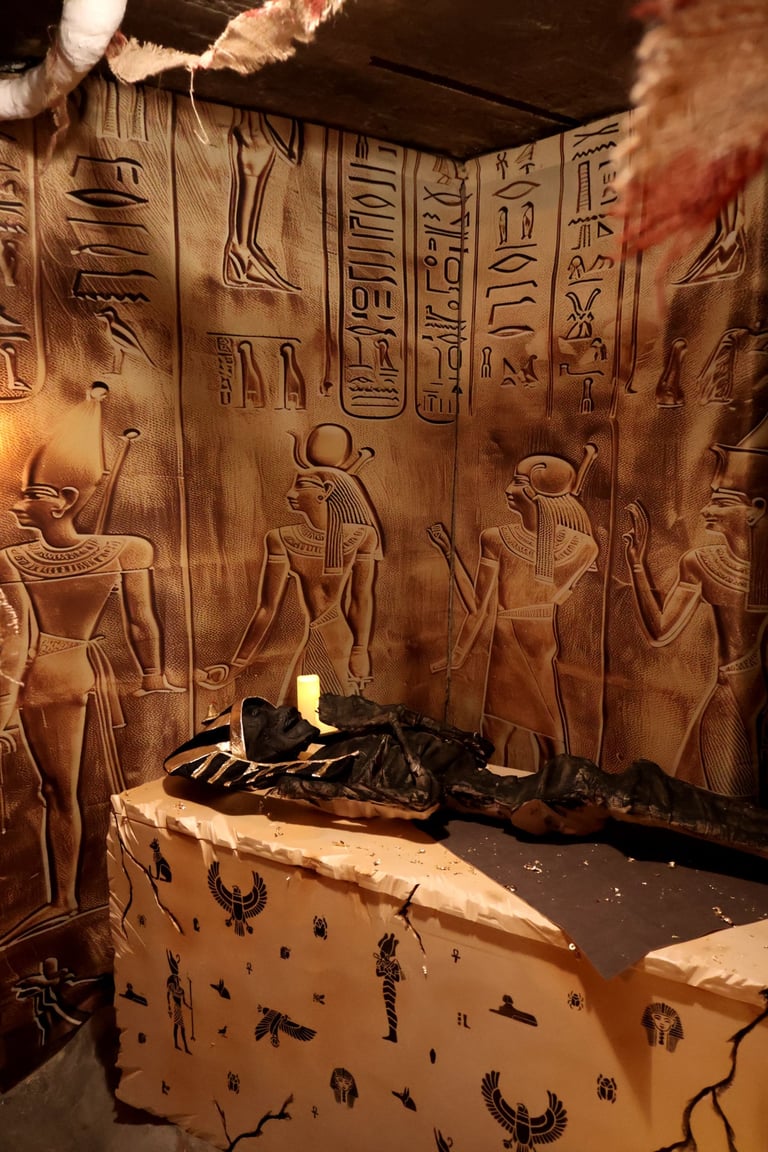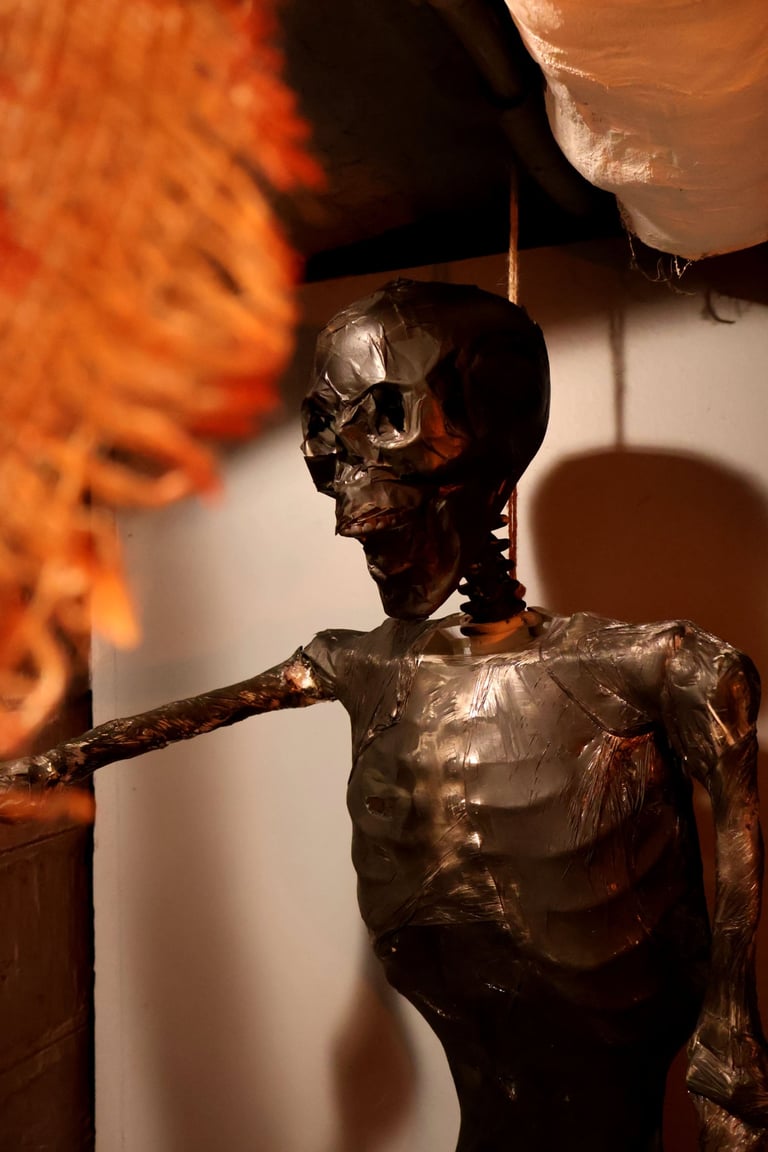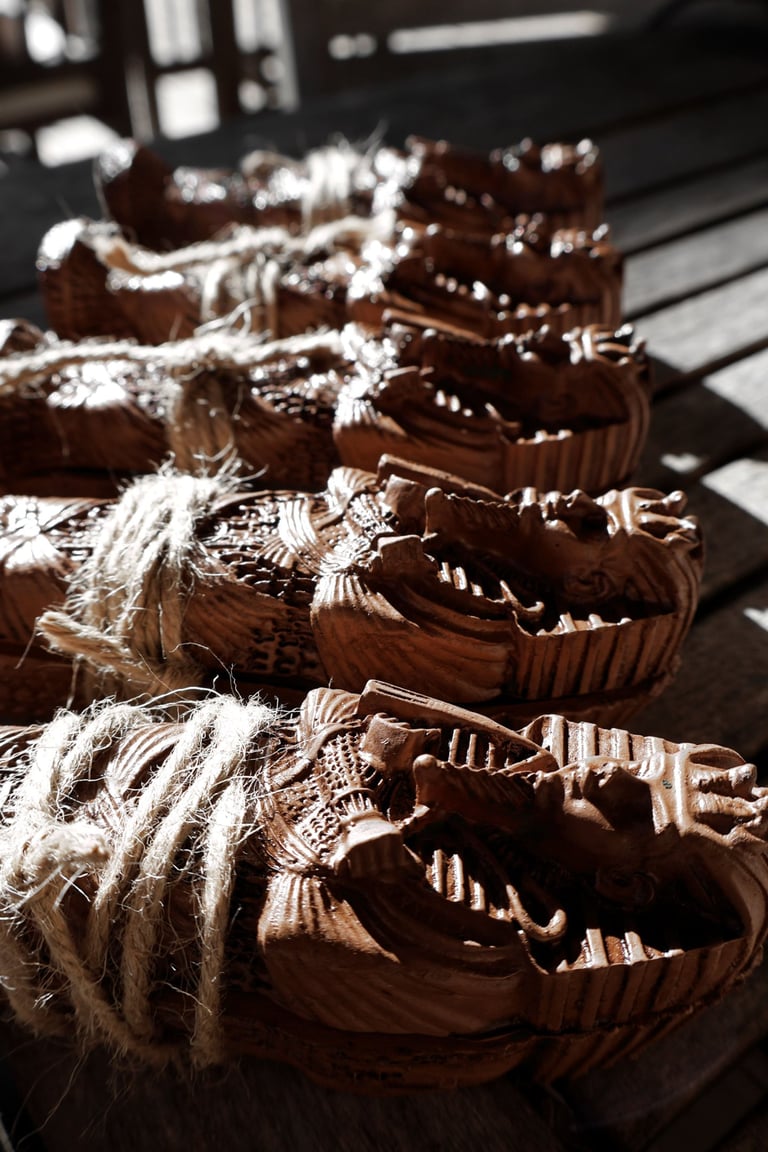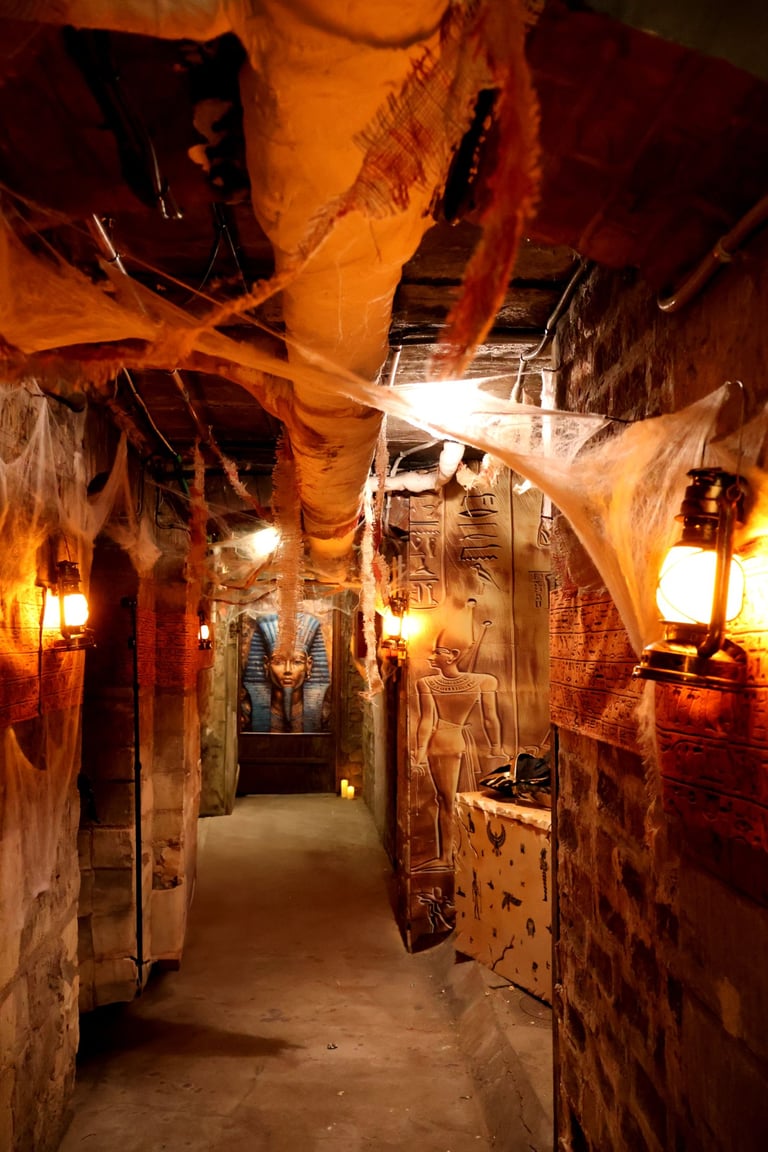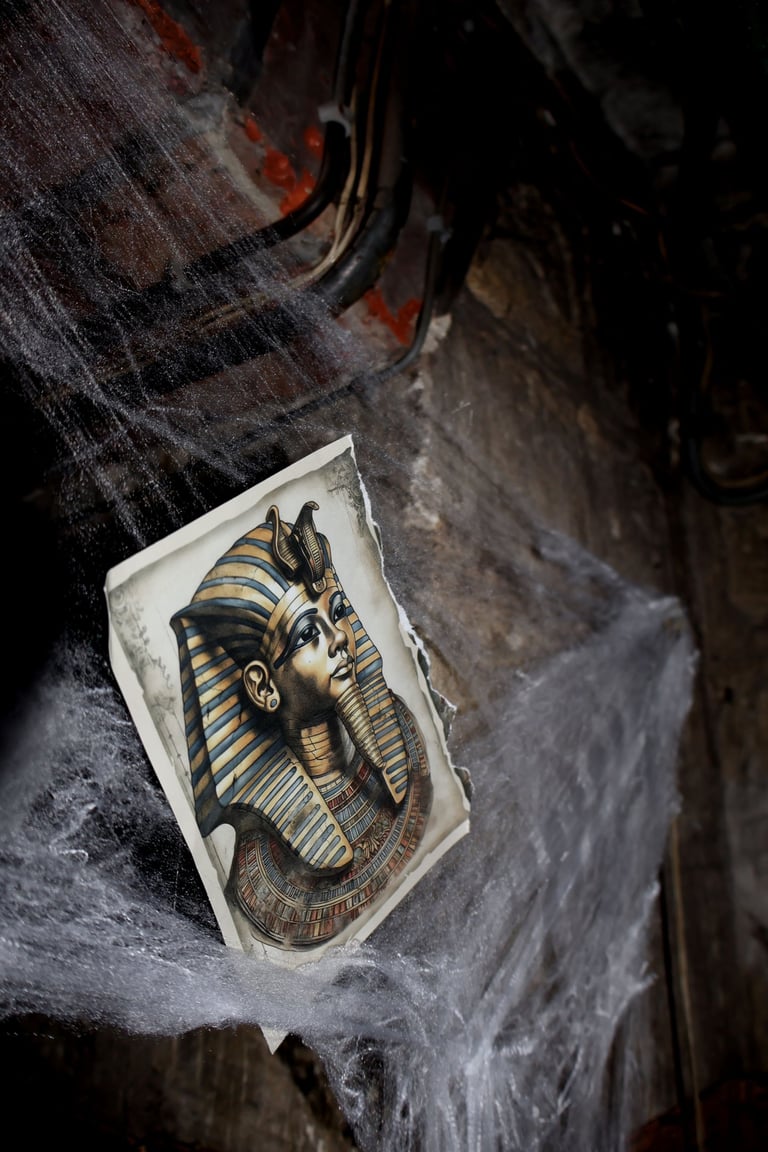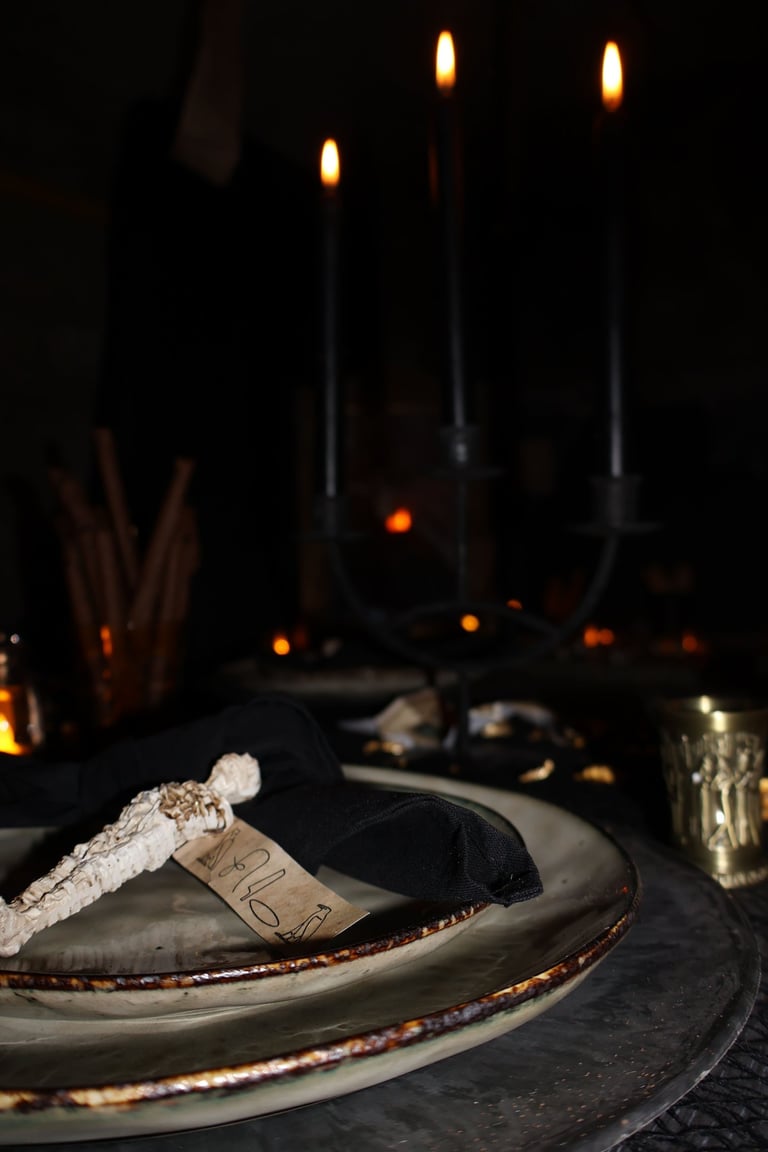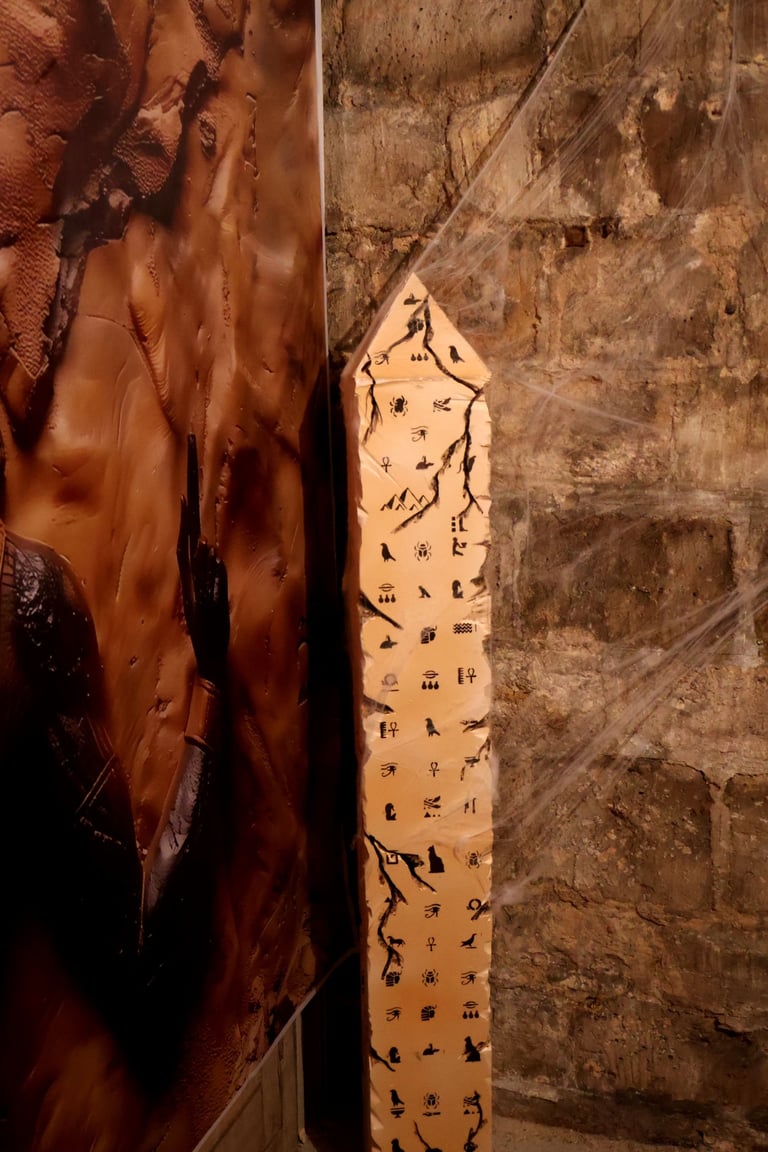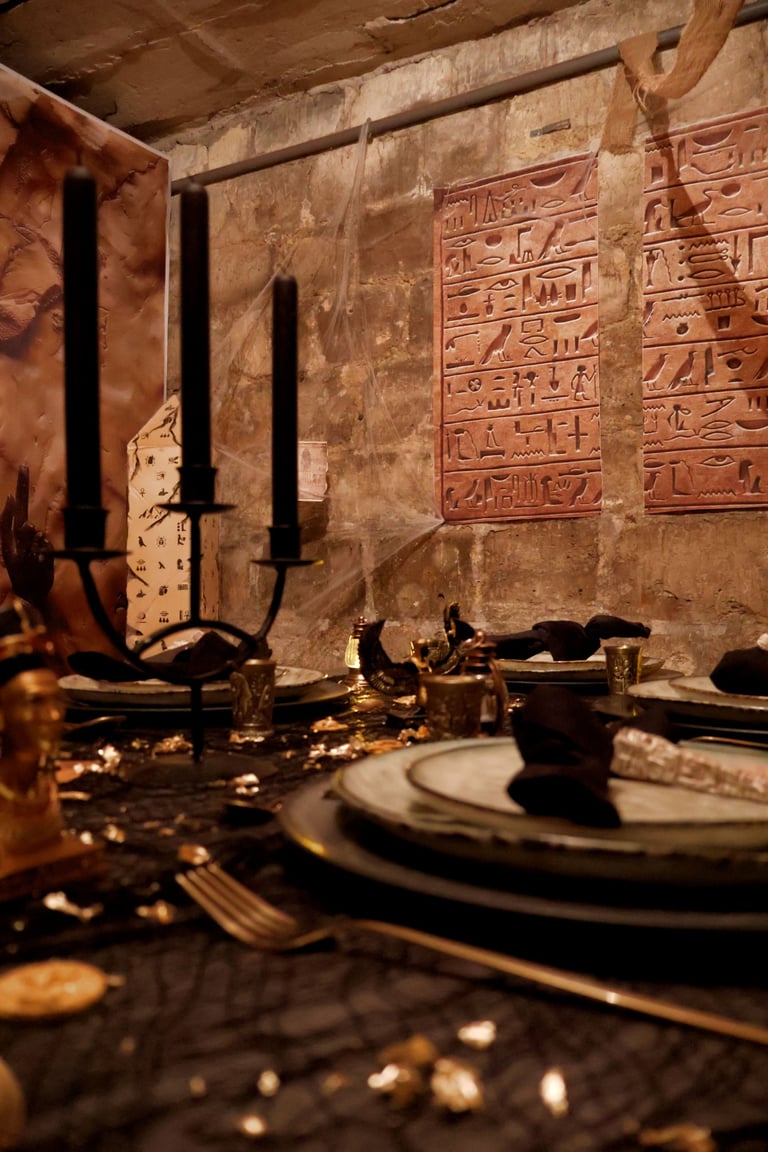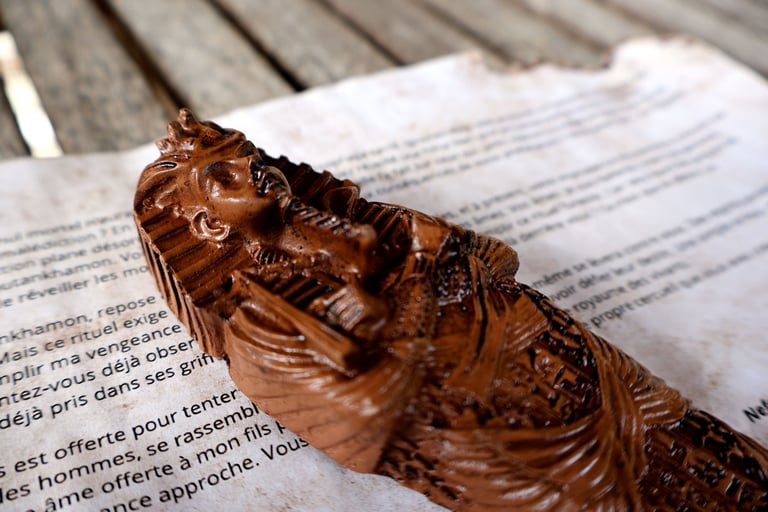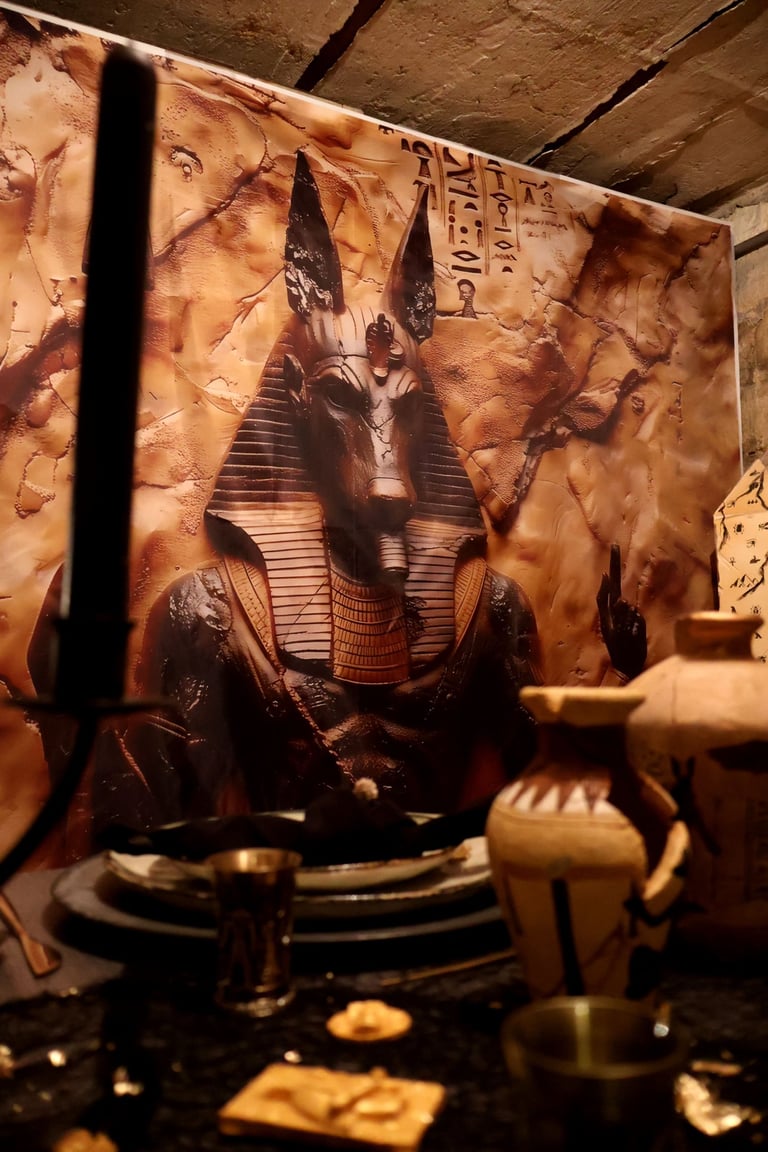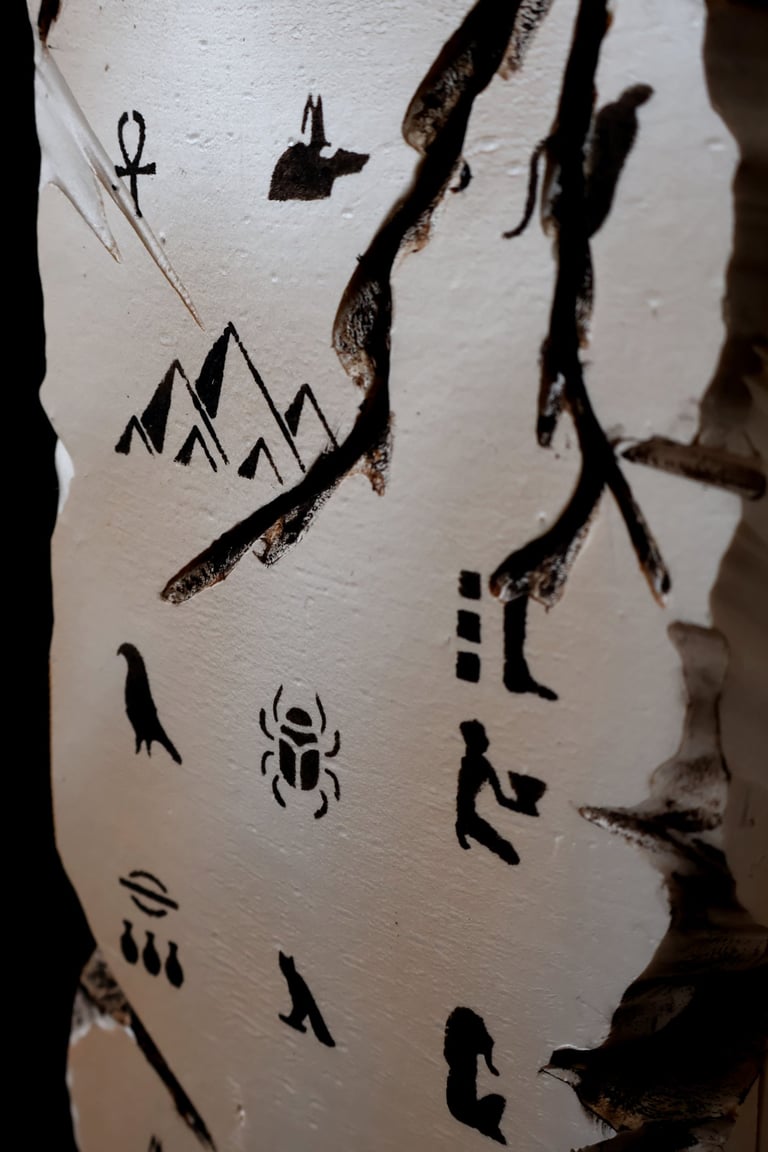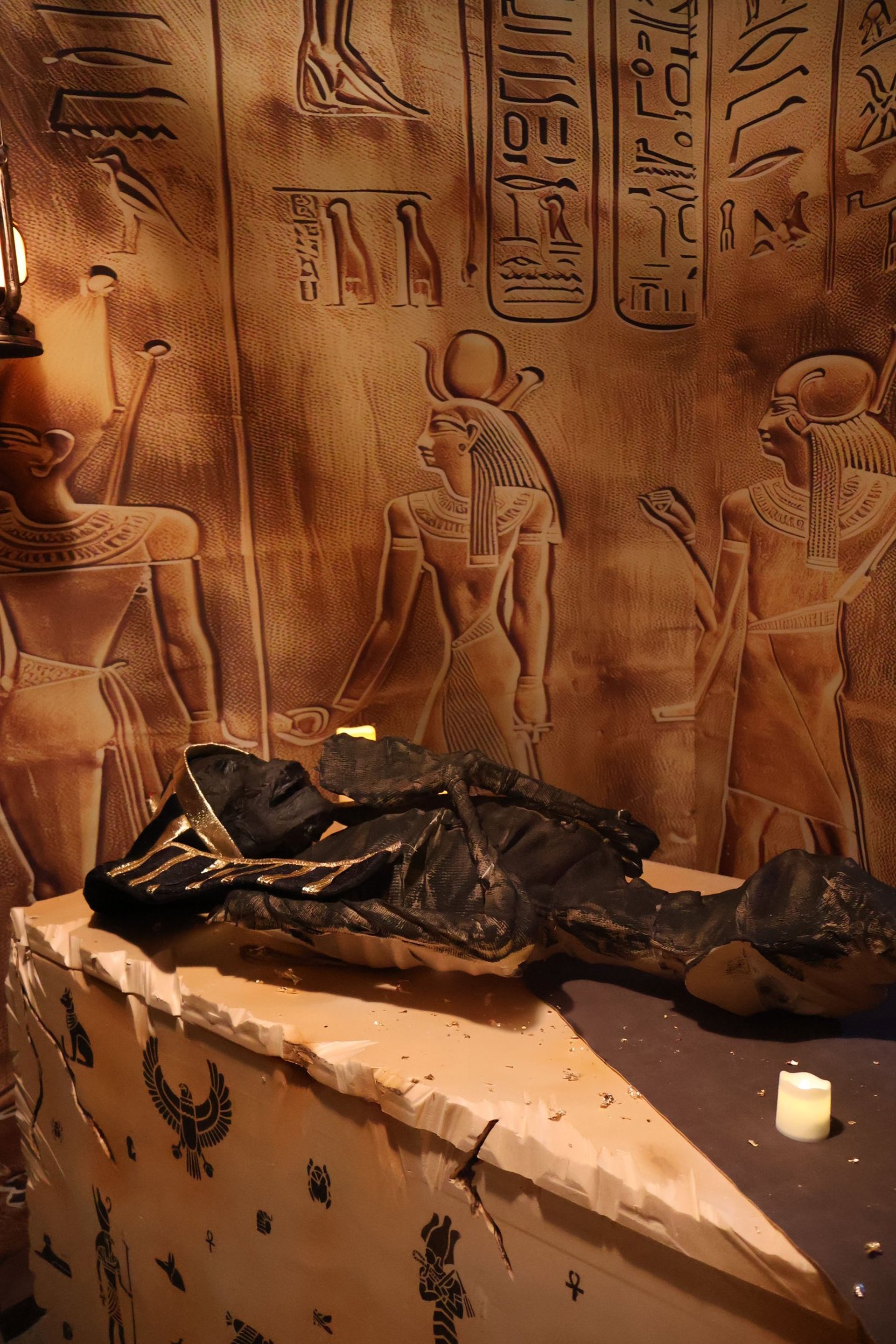
The Curse of
Tutankhamun
IF YOU'RE FEELING CURIOUS ABOUT...
The curse of Tutankhamun
The Mystery: Nefertiti’s Call
Weeks before the event, each guest received a strange relic: a finely carved wooden sarcophagus, its lid engraved with ancient hieroglyphs that seemed to whisper a silent warning. By opening this mysterious box, they had unknowingly sealed their fate. Each lifted lid awakened an ancient curse, a simple act triggering the wrath of a forgotten queen—Nefertiti—who vowed to avenge the disturbed slumber of her son, Tutankhamun.
The invitation was not just a warning; it was a prophecy. Their curiosity had sealed their doom: their souls were now the price to awaken the beloved son of the Queen of Shadows.
The Immersive Set: A Descent into Mystical Egypt
In a carefully designed crypt, guests were transported into the depths of ancient Egypt. The immersive setting exuded both mystery and menace: walls covered in intricate hieroglyphic frescoes, towering statues of Anubis casting ominous shadows, and a central funerary table adorned with dark opulence—black candelabras illuminating a banquet laced with golden artifacts and burial symbols. Dinner plates adorned with skeletal motifs and black napkins subtly echoed the traditions of offerings and ancient rites, while sacred urns and ritual objects hinted at the weight of long-lost curses. Every element suggested that this feast was no mere gathering, but rather a step in a dark ritual, one that sealed the guests’ fate.
Eerie details heightened the suspense: cobwebs suspended in the air, flickering torchlight casting ghostly shapes. In the corner, the sarcophagus of Tutankhamun lay in wait—majestic, menacing. Surrounded by glowing runes, it seemed to anticipate the moment when the guests would dare to disturb its eternal rest.
The atmosphere was thick with the echoes of a distant past, as if each stone were imbued with the magic of the pharaohs. From the moment they arrived, guests were immersed in a chilling narrative: Queen Nefertiti’s vengeful voice condemned them for desecrating her son’s tomb. This sense of impending doom set the tone for a night where every element—a half-risen mummy, cryptic messages etched in stone, statues that seemed to watch—drew them deeper into an unrelenting experience.
The Curse of Tutankhamun was not just an event—it was a sensory and psychological journey, where ancient Egyptian mysticism collided with modern horror. A night from which no one would emerge unchanged, hearts marked by both grandeur and terror.
